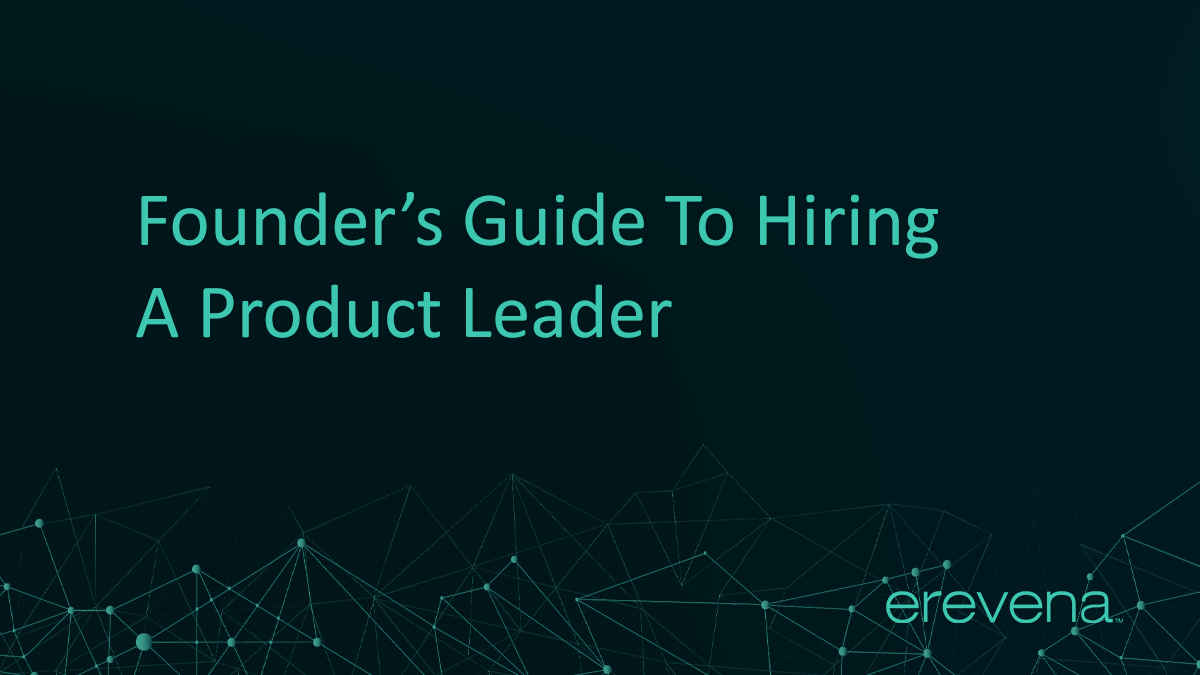Lessons learnt from bringing together leaders to discuss the successful international growth of businesses across the US and Europe.
Erevena recently hosted a briefing, in collaboration with Lewis Silkin LLP and Accelerated Digital Ventures, bringing together business leaders to discuss the successful international growth of businesses. An initial introductory discussion featured Keith Teare, Founder of Techcrunch and Executive Chairman at Accelerated Digital Ventures. Followed by an insightful panel discussion featuring Sarah Harvey, who successfully launched Tough Mudder internationally and ran Square in the UK for two years, Jambu Palaniappan, Non-Executive Director, who previously ran Uber Eats EMEA and was responsible for the expansion of ridesharing to India/EU, and Grace Gould, the founder & CEO of SODA, ex-EIR at Entrepreneur First.
The panel discussion sought to shed light on various key factors when considering international expansion:
Which market to expand into?
Critical to consider first is whether it makes sense to expand internationally. A trap that many companies fall into is expanding too quickly as a crutch for plateauing growth in the home market. Therefore, understanding successful expansion in many cases will begin with troubleshooting and solving problems within the home market first. Once there is a clear understanding of issues arising within the home market, and how these can be solved, international expansion may be the logical next step.
Subsequently, it is key to gain a deep understanding of the markets you are considering expanding into. This comes from understanding customers within those countries and may extend to understanding customers in specific cities, depending on which market you are looking into. It is key to understand the potential needs of these customers, and their potential problems your business is able to solve.
When considering expansion into the US market, many companies have a natural bias towards cities such as New York and San Francisco. However, as cost structures in these cities are significantly higher, this bias should be questioned, and it must be considered which city works best for your business, and where your customers are based.
Who to send to the new market?
When deciding who to have on the ground in a new market, the cost is a key consideration. In the US hiring is comparatively expensive, due to salaries, healthcare costs etc. Furthermore, additional business costs such as legal costs can be crippling for early-stage businesses. Working with a consultant should, therefore, be considered, as opposed to making longer-term hiring decisions at the early stage of new market entry. Smaller, bootstrapped companies often keep logistics light when testing the success of a new market, in order to minimize costs.
How much product adaptation does expansion into a new market require?
This depends on whether your company has a product-market fit that is scalable across a variety of new markets. When considering Uber’s global expansion, the company knew that customers were experiencing the same problem across markets, with demand existing globally for a ridesharing mobile application. Therefore, there was little product adaption required to ensure product market fit. In comparison, Uber Eats’ expansion into EMEA was significantly more challenging due to the competitive dynamics of the European markets. If the market you are entering into is highly competitive, it may be more difficult to establish a product-market fit and competitive advantage. This is highly important to consider before entering into any new market.
It is also important to note, that product is not the only thing that may need adapting when considering international expansion; it is highly important to consider your brand as well. Looking at Square’s expansion from the US into the UK market, the product that was launched was similar to the products the company launched in other markets, therefore requiring little product adaptation. However, the brand required a significant amount of marketing, as very few people had previously heard of Square in the UK, and therefore this was significantly more important for Square than product adaptation.
How should you go about attracting/retaining top talent when expanding internationally?
A critical component of attracting top talent in the US market is to be comfortable with equity compensation. The US market has traditionally been more exposed to this component of remuneration. Whilst this is becoming more and more common within the UK market, equity still remains an important difference between attracting talent within the UK and the US, and is critical to ensuring top employees are incentivised to stay with the business long-term.
More broadly, for anybody thinking of hiring outside their home market, it is critical to determine how you are going to test for cultural fit within your organisation. This is likely to require building a mechanism to evaluate what is culturally important to you as a firm, in order to ensure cultural continuity and cohesion as you expand.
When trying to scale a business in the US it may be advisable to hire temporary employees which is made possible by the highly flexible employment laws, and then reviewing them after a few months in order to understand if they are a good cultural fit for the business before bringing them on board permanently.
Having attracted top international talent, it is highly important to ensure this is retained, with the process beginning as early as possible. This should include clarifying with employees in new markets how you will be communicating with them from the home market; how frequently this communication will occur; and what you expect from them. Not only does this clarify expectations but can also prevent employees in new markets feeling isolated from those in the home market.
Bootstrapped vs capital intensive?
The majority of startups will struggle with the capital-intensive approach to international expansion, as this requires raising large amounts of capital prior to expanding. However, it is important to understand that it is possible to evaluate market opportunity, without requiring massive capital investment. Nevertheless, this will require commitment, conviction and resolve to crack the market, and should not be undertaken as a ‘dipping one toe in the water’ approach. Whether or not the business has plenty of capital, testing should be undertaken to ensure that expansion into a particular market is the right move for a business.
How do you go about market research?
A highly data-driven approach is advisable. There are affordable ways to do market research on the ground, with services such as Streetbees in the UK, which are useful to talk to a sample of the population cheaply. If you don’t have feet on the ground in a market, tools such as Google Surveys can connect you to a few thousand people in an affordable way, or use sites such as usertesting.com.
Another point to consider is that it can be highly valuable to get members of the senior team involved in market research, to ensure that they have a good sense of what is going on in new a market. This can be done by speaking directly to customers, and even competitors. This is also helpful in the eventuality that problems arise within the new market, and the business will then have senior leaders with an in-depth understanding of the market who are able to help firefight.
What tips would you give to those trying to raise capital in the US?
Due to the cultural differences between the UK and the US, it may be advisable to leave the humble, self-deprecating attitude behind. The US has a culture that encourages self promotion, and therefore it’s important to sell US investors the dream, in a way that may make a British national feel uncomfortable.
Furthermore, the US focuses far more on the economics. It’s therefore hugely important for European businesses wishing to raise capital in the US to be able to tell their story in numbers. This may involve beginning a pitch by breaking down the economics and explaining the company’s anticipated results when they receive funding. This comes before explaining the business’ founding story. This means telling the story backwards, beginning with future results, satisfying America’s more results and numbers-driven approach to venture capital.
The numbers-driven approach also extends to important brands that Americans may not have heard of. For example, for a UK business that has a partnership with Selfridges, this may be meaningless in America. Selfridges should therefore by quantified by revenue, or number of customers, or number of social media followers etc.
What are the most important mistakes made when it comes to international expansion?
Never over-promise to investors. This is a common mistake that businesses make, particularly when growth is plateauing. Companies often promise investors that new market entry will solve the problems that the business is facing. New market entry is highly complex, involving product localization, country support, growth sales strategy, and it is therefore not unlikely that something will go wrong. This needs to be taken into account, and the investor’s expectations need to be managed. Furthermore, new market expansion can also fail, as was the case with Uber’s entry into Japan. This can be due to many issues including pricing restrictions or supply constraints. It is therefore critical to be able to evaluate and learn from the reasons for failure, and not to over-promise to investors on the chances of success.
Another key mistake comes back to hiring. It is easy to make bad hiring decisions when businesses are launching new markets and feeling under pressure to make the expansion a success. However, it is critical to think carefully about both the role and the type of person you want to fill that role, in order to have the best chance of success.
Share this article:














